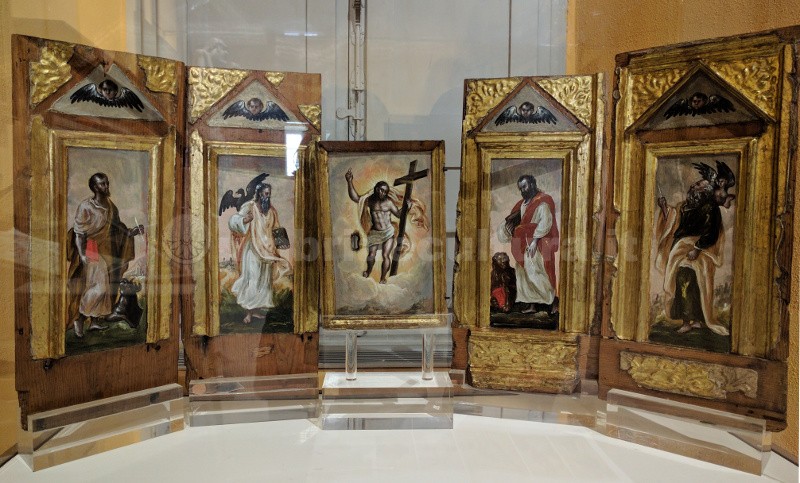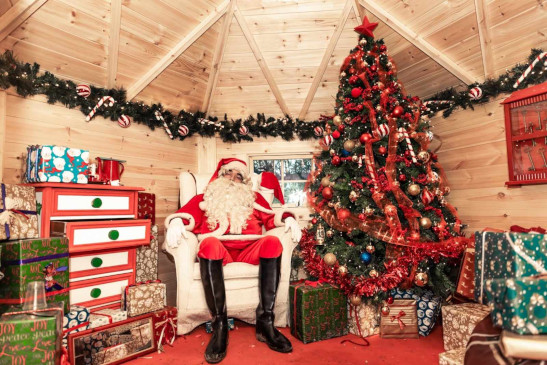The Bettona Museum houses an archaeological section and an art gallery full of works of significant historical and artistic interest
Bettona, an Etruscan, later Roman, city, a delightful village to be discovered, houses a museum that contains very valuable works that wind between Palazzo Biancalana, which houses the archaeological section, and Palazzo del Podestà where the art gallery is located.
The archaeological part houses pottery, painted pottery, urns and funerary and border stones, epigraphic texts, stamps and seals, sculptures from the Late Hellenistic period and Roman marbles, post-classical stone finds and, among which a splendid marble head of Aphrodite from the 4th century BC.
In the gallery it is possible to admire, among others, the Adoration of the Shepherds by Dono Doni, a large painting whose predella with the stories of the life of San Crispolto, was among the stolen works, together with the Madonna della Misericordia del Perugino, in 1987 from museum and then to be found, in 1990, in Jamaica.
Prominent work of the production of Dono Doni, dated 1542, the Adoration of the Shepherds catches the eye for the particular iconographic point of view: it was believed that the woman at the center of the representation was the client who ordered the painting, after a careful study the painting should represent “The story of the unbelieving midwife” present in the apocryphal gospels. The story goes that Maria was assisted, during childbirth, by two midwives: Zenobi and Salome, the latter protagonist of the healing of invalid hands; Zenobi directly assisted Maria at the birth and, when she realized that she had remained a virgin despite having given birth, she ran to Salome to tell her what she had found; Salome, like St. Thomas, wanted to touch to believe and her hands completely dried up, frightened she called on the help of God who sent her an angel who suggested that she take the newborn Jesus in her arms. There are 12 recognized iconographies that tell this story: Giotto, for example, depicts it in the Scrovegni chapel in Padova, where the midwife is seen intent on raising Jesus just born. From the stylistic point of view, the Flemish influence with the meticulous rendering of details is interesting, an influence that the Umbrians absorbed with the arrival of the northern European artists in Umbria and Assisi in particular.
A unicum is represented by the tabernacle recently attributed to El Greco: the relations of the Hellenic painter with the territory are testified by the portrait made for the knight Vincenzo Anastagi, who was assigned the command of the Church of San Giovanni dei Cavalieri di Malta in Bettona to which the tabernacle was probably intended. The four evangelists and the risen Jesus are depicted on the five tablets that make up the work, in the silvery-white anatomy typical of El Greco.
Of great importance are Saints Pietro and Paolo by Spagnoletto, a wooden procession crucifix unfortunately not in excellent condition and awaiting restoration (for donations consult the Art Bonus website), a glazed terracotta statue of the Della Robbia school depicting Saint Anthony and the sweet Madonna della Misericordia by Perugino, painted for the church of Santa Caterina in Bettona and subsequently housed in the church of San Crispolto, with the two patrons placed under the protection of two saints: Santo Stefano represented with the stone on the shoulder symbol of his martyrdom, and Saint Jerome represented a penitent in the act of beating his chest with the stone.
A rather unusual iconography is represented by a work by the school of Perugino with Sant’Anna which protects from the arrows probably symbol of the plague.
A singular “catalog” of ceramics by Gregorio Caselli, in the form of a panel, presents a series of decorations that are part of a kitchen wall covering with the game of goose, tambourines, flowers, fruits, animals and the classic flamed Deruta heart.
Benedetta Tintillini
Find the Bettona Museum on Google Maps:



